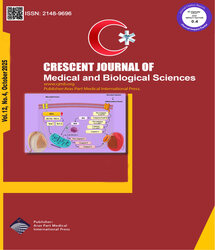
| Review | |
| The Risk of Uterine Rupture in Labour Induction of Women With Previous Cesarean Delivery | |
| Zehra Kurdoglu1, Mertihan Kurdoglu2 | |
| 1Department of Obstetrics and Gynecology, Division of Reproductive Endocrinology and Infertility, Ankara Training and Research Hospital, Ankara, Turkey 2Department of Obstetrics and Gynecology, Division of Reproductive Endocrinology and Infertility, Faculty of Medicine, Gazi University, Ankara, Turkey |
|
|
CJMB 2016; 3: 008-013 Viewed : 6090 times Downloaded : 6367 times. Keywords : Uterine rupture, Labour induction, Pregnancy, Vaginal birth after cesarean |
|
| Full Text(PDF) | Related Articles | |
| Abstract | |
Objective: Due to the increased number of labour inductions in women with previous cesarean section, the risk of uterine rupture leading to maternal and fetal mortality is also increasing. In this manuscript, we aimed to review the risk of uterine rupture in labour induction of women with prior cesarean section. Materials and Methods: Data from 48 reports belonging to the years 1994 through 2015, obtained via a search on various internet sources by the words “labour induction”, “previous cesarean”, “uterine scar”, “uterine rupture” were used to characterize the risk factors, methods and complications of labour induction in women with previous cesarean section. Results: The success of labour induction after a previous cesarean section is related to a history of prior vaginal delivery, the indication of prior cesarean delivery, age, body mass index and ethnicity. The risk of uterine rupture is lower with mechanical dilatators compared to prostaglandins when they are used for cervical ripening. Oxytocin is associated with an increased risk of uterine rupture in such women but induction and augmentation of labor is an option for all women undergoing a trial of labor after cesarean section. Although some guidelines discourage the use of prostaglandin E1, some others support the use of prostaglandin E1 or E2 for induction of labor in rare situations provided that the women be informed of the higher risk of uterine rupture. Conclusions: Previous uterine surgery is the most common underlying reason for an increased risk of uterine rupture in subsequent trial of labour. When indicated, before considering a labour induction in these patients, a risk assessment should be performed based on various parameters. For prediction of uterine rupture, lower uterine segment may be measured by ultrasonography. Individually selected methods for labour induction should be discussed with the patients since they are mostly associated with increased risk of uterine rupture. |
Cite By, Google Scholar
Online Submission System
 CJMB ENDNOTE ® Style
CJMB ENDNOTE ® Style
 Tutorials
Tutorials
 Publication Charge
Medical and Biological Research Center
About Journal
Publication Charge
Medical and Biological Research Center
About Journal
Aras Part Medical International Press Editor-in-Chief
Arash Khaki
Deputy Editor
Zafer Akan

















